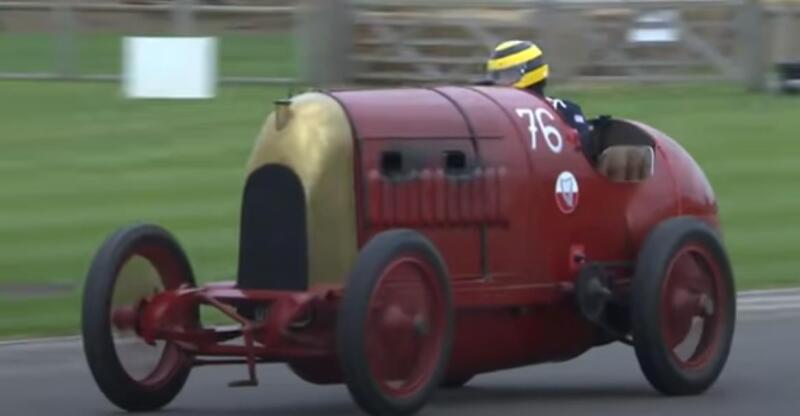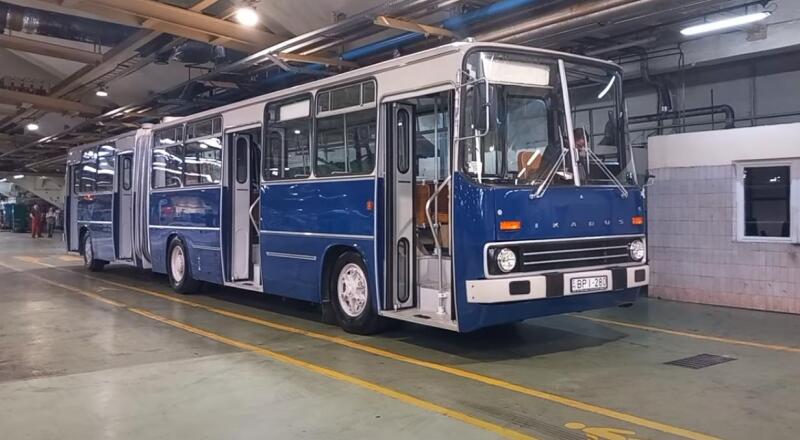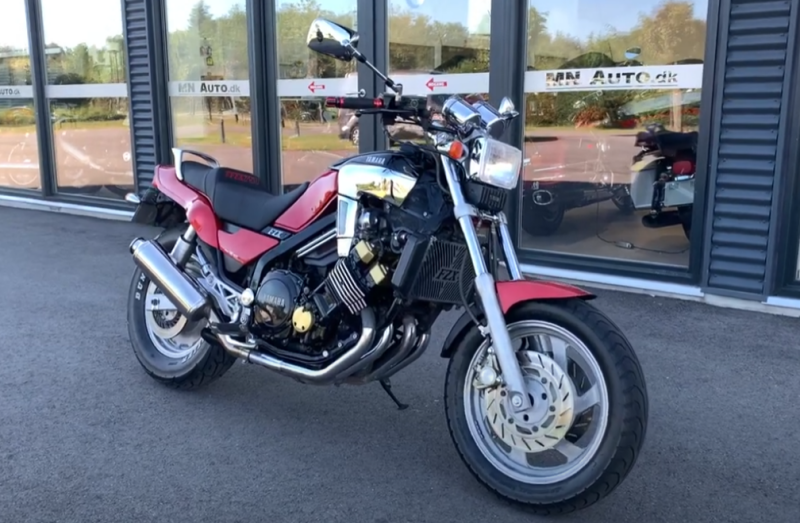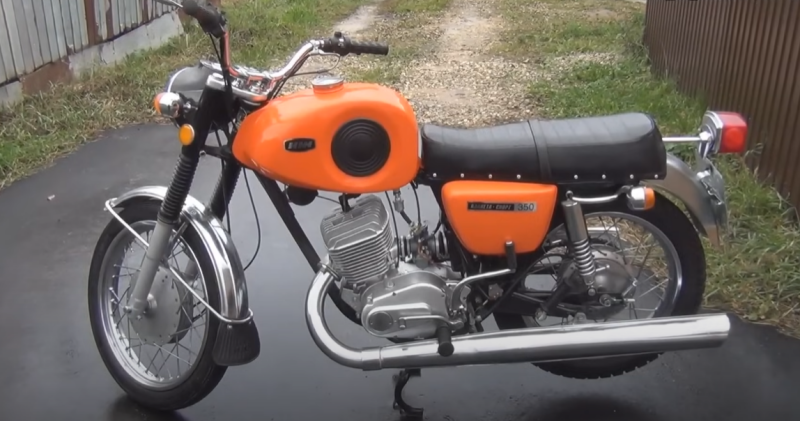The record holder at that time was the German racing car “Blitzen Benz”, built in 1909 by Karl Benz. It was equipped with a 21,5-liter engine producing 200 hp, which helped it set a new speed record. At 1 km at the Brooklands circuit in Surrey, England, driven by French driver Victor Emery, a speed of 126 mph (202 km/h) was achieved.
 The fully restored "Beast of Turin" is preparing for the race. Photo: YouTube.com
The fully restored "Beast of Turin" is preparing for the race. Photo: YouTube.comAt the same time, Ford was working on his new car, the Ford Model T - his car received a 20-horsepower engine and could reach a top speed of 64 km/h.
Scary fire-breathing S76
But let's return to Fiat. Exactly a year after the successful race of Blitzen Benz, several brave engineers of the Italian company, unconditionally confident in their abilities, decided to build their own contender for the speed record - the S76.
Naturally, the main criterion for their success should have been a large and powerful power unit. And they created it. The inline four-cylinder engine, with a displacement of about 28,4 liters, was assembled on the basis of an aircraft unit, and produced an impressive 290 hp. It had four valves and two spark plugs per cylinder, and ignition was carried out using a crank handle and a high-voltage BOSCH magneto type DR4/4.
 There is no need to talk about the convenience of the driver of the “Beast of Turin”. Photo: YouTube.com
There is no need to talk about the convenience of the driver of the “Beast of Turin”. Photo: YouTube.comThe chassis had a rigid axle suspension system with leaf springs and longitudinal struts at the rear. Brakes were only fitted to the rear axle, which might seem a bit dangerous these days, but safety wasn't high on the list back then.
Manufacturers also took care of aerodynamics - the body panels received streamlined shapes, which, of course, helped reduce drag. But the huge disadvantage of this 300-horsepower “monster” was its weight, which largely depended on the mass of the built-in “superengine”. The weight of the car was a record 1700 kg, and even the fact that the thinnest sheets of iron were used in its creation, it was not possible to bring this figure to the required parameters. This played a major role in the handling of the high-speed Fiat.
And the new car looked and behaved truly intimidating, which earned it the nickname “Monster of Turin.” While moving, he “belched fire” and frightened everyone around with a terrible noise. As soon as the car was ready, sea trials began immediately. It fell to racing driver Felice Nazzaro to conduct them, who considered the S76 completely uncontrollable and after the first lap refused further tests.
The second copy with a “Russian trace”
A year later, Fiat built a second car of the same type. It was sold to the Russian prince Boris Sukhanov, who did not abandon the idea of setting a world speed record. Almost immediately after the purchase, he hires Pietro Bordino, a 24-year-old promising Italian racer. The young athlete accepted this challenge and agreed to participate in the race at Brooklands. However, when he first took to the track, the ride was so scary that he refused to go faster than 90 mph (145 km/h).
After that, Sukhanov attracted another driver - the American Arthur Duray, who managed to reach a one-way speed of 132,27 mph (213 km/h) in Ostend, Belgium. It was even faster than planes could afford back then. But, unfortunately, due to technical problems, the Beast of Turin was unable to complete the return journey in the allotted time, and the record was never officially recognized.
The first S76, which remained the property of Fiat, was completely dismantled after the end of the First World War. Little is known about Sukhanov’s car. For some reason, she ended up in Australia in 1919, although without a power plant. The car was rebuilt and fitted with a new Stutz engine, but in the early 1920s, while preparing for a race, the car was involved in an accident.
 The 114-year-old “Monster of Turin” feels confident at the Festival of Speed. Photo: YouTube.com
The 114-year-old “Monster of Turin” feels confident at the Festival of Speed. Photo: YouTube.comSomehow, only the chassis survived, which changed quite a few owners over the years, until in 2003 it fell into the hands of the British collector Duncan Pittaway. He thoroughly approached the issue of restoring a valuable specimen, and even got hold of the miraculously preserved engine of the first S76.
A few years later, the completely updated "Beast of Turin" was brought back to life. And in 2015, Pittaway was invited to Goodwood, where the car began its career at the beginning of the century, and the “Beast of Turin” became a participant in the “Festival of Speed.”










